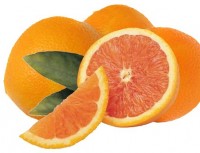
February 11 – 16, 2013
Primo’s Outlook
Lettuce:
Market has declined with better supplies.
Leaf:
Romaine market remains strong. Green and red leafs are lower. Seeing blister and peel on a lot of romaine.
Broccoli:
Broccoli market has come off again as the warmer weather has brought on better supplies. Quality has been good overall.
Cauliflower:
Cauliflower market is steady. Quality has been very good.
Carrots:
Market is steady out of Georgia with good quality.
Celery:
Celery market is very strong. Quality has been very good.
Strawberries:
Florida berry quality has been good overall. Market has been steady to lower.
Potatoes:
Idaho market has remained steady for the most part with good quality.
Onions:
Onion market has leveled off for now with good quality.
Citrus:
Market is steady on navels and lemons. Quality has been good on lemons and very good to excellent on oranges.
Cucumbers:
Market on cucumbers is weaker than last week, but still strong.
Peppers:
Market is up slightly, ok volume and very good quality
Tomatoes:
Tomato market is steady on rounds. Grapes, cherries, and Romas are steady.
Feature of the Week
Cara Cara Oranges are here! Power up this cold and flu season with Cara Cara Oranges that are packed with Vitamin C to help keep your immune system strong! These sweet and juicy navel oranges are full of vitamins and minerals to leave your body feeling good.
A cross between the Washington navel and the Brazilian Bahia navel, Cara Caras were first discovered in 1976 at Hacienda Cara Cara in Venezuela. Cara Cara oranges are now grown in California’s San Joaquin Valley, and are available December through April. The bright orange exterior is similar to other navels, but their interior is a lovely pinkish-red. Cara Caras are seedless and have an exceptionally sweet flavor, with a tangy, cranberry-like zing.
Cara Caras are an excellent source of vitamin C, A and fiber; a good source of folate and potassium, and a natural source of Lycopene, a disease-fighting antioxidant. This power-packed citrus fruit is gaining popularity, and with its lower acidity content, it is a great treat for kids. A perfect snack served as wedges, as well as a colorful addition to beverages, or squeezed into vinaigrette salad dressings.
Recipe of the Week
Cara Cara Salsa
Ingredients:
½ cup Cara Cara orange segments, diced
1 cup Roma tomatoes, diced
1 tbsp. red onion, small dice
1 tsp. jalapeño pepper, minced
2 tbsp. cilantro leaves, minced
1/8 tsp. salt
Instructions:
Combine all the ingredients and toss gently to mix. Cover and refrigerate for 30 minutes to blend flavors. Serve with chips, or use as a topping for white fish, shrimp, chicken, or tacos. (Makes 4 servings)
Fun Facts of the Week
Misconceptions & Myths….
Fruit is bad for people with diabetes because it contains sugar – FALSE!
People with diabetes are strongly encouraged to choose fruit over more processed foods high in sugars and other carbohydrates. Fruit contains natural fiber, vitamins, enzymes and other essential nutrients that people with diabetes need to maintain a healthy diet. The majority of common fruits, including oranges, have a low to medium glycemic load, which means most people with diabetes can enjoy fresh fruit as part of a healthful diet. The key to eating fruit on a diabetic diet is to space out the portions over the course of a day.
You need to limit fruit intake because of carbs – FALSE!
It’s okay to have carbs, you just want ones that release their energy slowly. Most fruits, including oranges and grapefruit, are perfect for this because they have a low glycemic load and also contain fiber. In other words, the carbohydrates found in fruit such as oranges are truly quality carbs. Any way you slice it, nutrient rich fruits are good for you and should be a part of your everyday diet!


